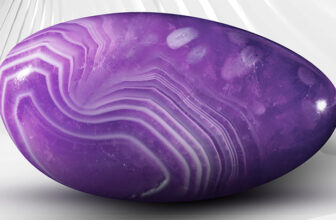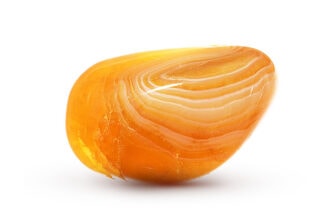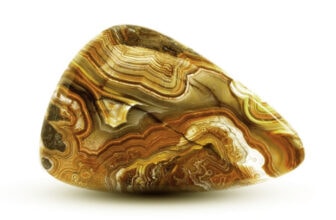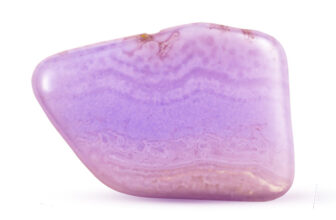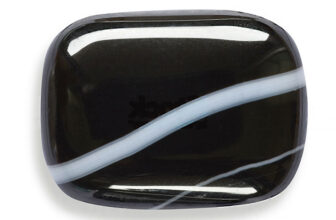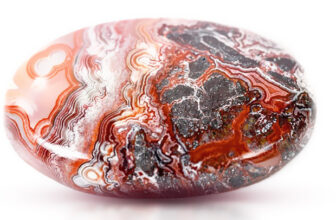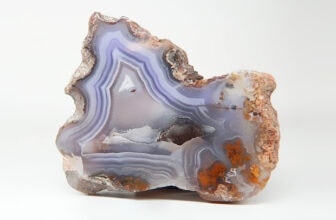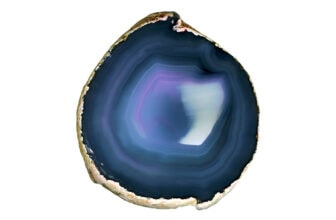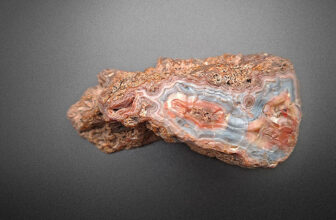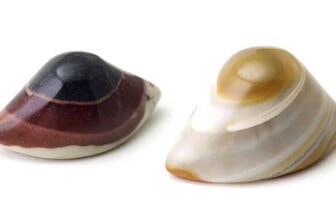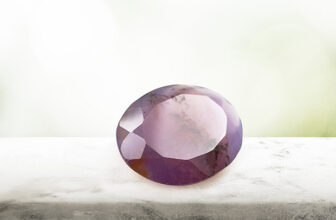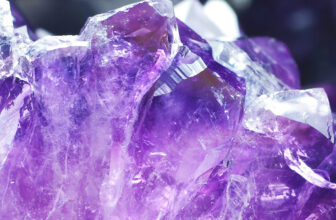Crystal Geodes
 Have you ever held a rock that looked utterly ordinary – only to crack it open and find a glittering world inside? That moment of revelation captures the essence of a crystal geode. From the outside, they appear as simple, unassuming stones. But inside? A hidden universe of crystals, frozen in time and radiant with color.
Have you ever held a rock that looked utterly ordinary – only to crack it open and find a glittering world inside? That moment of revelation captures the essence of a crystal geode. From the outside, they appear as simple, unassuming stones. But inside? A hidden universe of crystals, frozen in time and radiant with color.
A geode is essentially a hollow or partially hollow rock cavity lined with crystals or mineral matter. Unlike solid crystal clusters that grow openly on rock surfaces, geodes form in secret. They develop within protective shells, creating enclosed environments where crystals can flourish undisturbed for thousands – or even millions – of years.
Collectors love geodes for their natural drama: the humble exterior contrasted with breathtaking interiors. Energy workers see them as symbols of hidden potential and self-discovery – the idea that true beauty often lies beneath the surface.
The word geode itself comes from the Greek geōdēs, meaning “earthlike.” It’s an elegant nod to their humble origins, their round, earthen shells concealing luminous, otherworldly depths. In a way, each geode mirrors us – an outer layer of composure, protecting a vibrant, ever-evolving inner world.
The Formation Process
How do these dazzling chambers come to exist within ordinary rock? The answer lies in an exquisite balance of geological patience and chemical artistry.
From Gas Bubbles to Crystal Caverns
Geodes typically begin their lives in volcanic or sedimentary environments. Imagine a bubble of gas trapped in cooling lava, or an air pocket within layers of mud and sediment. Over time, these hollow spaces become secret vessels, slowly filling with mineral-rich water. The water seeps in through microscopic cracks, carrying dissolved minerals like quartz, calcite, or amethyst.
As conditions shift – temperature drops, pressure changes – the minerals begin to crystallize. Layer upon layer, crystal structures grow inward from the cavity walls, transforming an empty void into a glittering sanctuary. The process can span tens of thousands to millions of years. Each shimmering facet marks a moment in geological time, an unhurried collaboration between water, minerals, and stone.
The Artistry of Nature’s Chemistry
The type of mineral that forms inside a geode depends on the chemistry of the groundwater and surrounding rock. Quartz geodes tend to have clear or milky interiors, while those enriched with iron become fiery orange agates. If manganese or trace iron infiltrates the mix, the result might be a violet amethyst geode – prized for its regal hue and tranquil energy.
Even slight changes in temperature or pressure can alter how crystals form – their size, symmetry, or luster. This is why no two geodes are ever truly alike. Each one is a geological fingerprint, a masterpiece carved by the slow hand of the Earth.
Types and Varieties of Geodes
Not all geodes are created equal – and that’s exactly what makes them so endlessly fascinating. Some glow with soft lavender light; others shimmer like frozen starlight. The differences depend on their mineral makeup, birthplace, and even how they’ve been shaped by time and pressure.
Let’s explore the main varieties that collectors, healers, and dreamers treasure most.
By Mineral Composition
Each geode is like a recipe – the ingredients determine the outcome. The mineral cocktail that flows into its hollow core decides the color, crystal structure, and overall feel of the piece.
Amethyst Geodes – Perhaps the most famous of all. Their interiors gleam with deep purple quartz crystals that seem to hold twilight within them. Often associated with tranquility, spiritual awareness, and protection, amethyst geodes are favored in meditation spaces and sacred rooms. Large “cathedral” geodes from Brazil and Uruguay can reach several feet tall – like portals to another world.
Quartz Geodes – The classic clear or milky geodes, symbols of clarity, balance, and amplification. They radiate soft, neutral energy, making them perfect for cleansing other stones or harmonizing a room’s energy. Some even contain sparkling druzy quartz that looks like sugar crystals scattered across stone.
Agate Geodes – These are a study in contrast: rough on the outside, vividly banded on the inside. Their layered chalcedony walls can display stripes of grey, blue, pink, or caramel tones – sometimes all at once. Agate geodes remind us that beauty often reveals itself in layers, not all at once.
Celestite and Calcite Geodes – Rarer and more delicate, these geodes often feature sky-blue celestite clusters or warm golden calcite points. They bring a touch of calm brightness, like bottled sunlight or fragments of the sky itself.
Each mineral variety carries its own story, its own vibration. Together, they form a spectrum of earth’s creativity – different moods shaped by the same natural process.
By Geographic Origin
Where a geode forms can be just as important as what’s inside it. Geodes from Brazil and Uruguay are world-renowned for their deep, uniform amethyst color. Moroccan geodes, in contrast, often feature vivid quartz points with subtle smoky tones. Mexican geodes tend to have agate-rich exteriors – smooth, colorful, and sometimes rimmed with chalcedony.
And in the United States, regions like Iowa, Kentucky, and the deserts of Arizona are famous hunting grounds. The Midwest’s Keokuk geodes, for instance, contain quartz and calcite crystals so clear they resemble tiny ice caverns. Each location gives its own geological “accent” to the stones, shaping them into unique ambassadors of their homeland.
By Size and Structure
If you’ve ever seen an amethyst cathedral standing taller than a child, you know geodes can be monumental. These massive cathedral geodes are prized for their sheer presence – awe-inspiring monuments of natural art.
On the opposite end of the spectrum are pocket geodes, small enough to fit in your palm. They make perfect personal talismans – portable reminders of Earth’s quiet miracles.
There are also whole geodes (unbroken, their secrets sealed inside) and cut geodes, which are sawn and polished to reveal their interiors. The former invites curiosity; the latter rewards it with beauty.
Whether you prefer a towering centerpiece or a subtle gemstone you can carry in your pocket, there’s a geode for every kind of wonder seeker.
Geodes in Myth and Memory
Why have geodes captivated people for so long? Maybe because they echo something ancient in us – the desire to look deeper, to discover light within darkness. Across centuries and continents, these glittering stones have symbolized mystery, wisdom, and divine beauty hidden beneath the surface.
Sacred Stones of the Ancients
Long before geodes were sliced open for display shelves, they were revered as sacred gifts from the Earth. Early civilizations often used them as talismans for protection or as vessels of spiritual energy. Ancient Greeks believed geodes could help connect the physical and spiritual realms, offering insight during moments of uncertainty.
In Egypt and Mesopotamia, rounded geodes were sometimes placed in tombs and temples, thought to embody the eternal life force within the earth itself. The Romans, ever drawn to natural beauty, used geodes and agates in their jewelry and mosaics – miniature universes encased in stone.
For Indigenous cultures in the Americas, geodes held powerful symbolic meaning. They were seen as “Mother Earth’s wombs,” containers of creation and transformation. To crack one open was to witness a miniature birth – the revelation of something sacred from within something ordinary.
The Spirit Within Stone
What makes crystal geodes more than just geological wonders? Perhaps it’s the way they feel – the quiet hum of energy when you hold one in your hand, or the sense that something alive sleeps within the stone. For many, geodes aren’t merely beautiful objects; they’re portals of energy, each one a microcosm of harmony, protection, and transformation.
Energetic Qualities
At their core, geodes embody containment and release. Their hollow interiors act as natural amplifiers – gathering, storing, and radiating energy over time. The crystal points inside reflect light and energy in countless directions, dispersing vibrations evenly, like ripples in a still pond.
In energetic work, geodes are said to help create sacred space. They stabilize chaotic energy, making them ideal for meditation corners, therapy rooms, or any place in need of grounding calm. The very structure of a geode – protective on the outside, radiant on the inside – mirrors the journey of personal healing: turning inward to find light, then sharing it outward.
Healing Through Reflection and Release
Have you ever felt like parts of yourself were hidden, waiting to awaken? Geodes speak directly to that feeling. They symbolize inner growth – the slow, patient evolution that takes place in the dark before light returns.
Amethyst geodes, for instance, are known to soothe the mind, reduce stress, and support clarity during emotional turbulence. Clear quartz geodes can heighten awareness and purify thoughts, while agate-lined varieties encourage emotional stability and courage. When used during meditation, geodes can act as silent guides, helping the mind settle into stillness and the spirit reconnect with its deeper source.
The Harmony of Mixed Minerals
Many geodes contain more than one mineral species – an interplay of different energies harmonizing within a single form. Quartz mingling with calcite, amethyst with agate, or celestite with chalcedony – each combination enhances the geode’s energetic spectrum.
This fusion mirrors the complexity of human emotion and experience. Just as a single geode can hold multiple minerals, a person can embody multiple strengths, desires, and truths. In metaphysical practice, such stones are used to balance body and spirit, logic and intuition, grounding and expansion.
Spotting Real Geodes from Imitations
Have you ever seen a geode so vividly colored it looked almost unreal – and wondered if it actually was? In a world where natural beauty often meets human enhancement, distinguishing genuine geodes from artificial imitations can be tricky. Yet learning to recognize authenticity adds a deeper layer of appreciation. It’s not just about owning something beautiful; it’s about understanding the story locked within the stone.
Natural vs. Artificial Geodes
True geodes are geological time capsules – formed through slow mineral deposition inside rock cavities over millennia. Their outer shells are usually rough, uneven, and nondescript, while the inside reveals crystals that vary in size, color, and pattern. No two are ever perfectly alike.
Artificial or altered geodes, on the other hand, often give themselves away through too much perfection. Bright, neon colors? That’s a clue. Many low-cost dyed geodes (especially in shades of electric blue, hot pink, or vivid teal) are real quartz geodes that have been artificially tinted to appear more striking. Though visually eye-catching, these treatments mask the stone’s natural essence and may even fade over time.
Another giveaway: unnatural symmetry or uniformity. Real geodes are products of chaos and patience, not precision. Their crystals point in varying directions, their shapes asymmetrical, their beauty irregular – exactly as nature intended.



